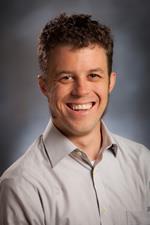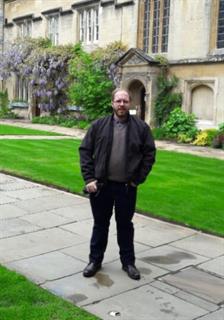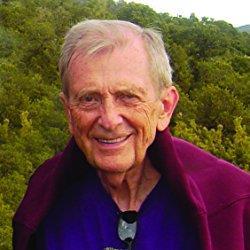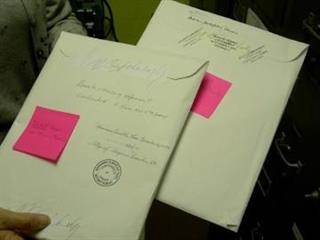Wednesday, July 18, 2018 8:59 PM

Next month in Petaluma, California, Gerhard Mayer, from the Institut für Grenzgebiete der Psychologie und Psychohygiene Freiburg, Germany will deliver his paper entitled “The authority strikes back: considerations about the allegedly fraudulent ‘Chopper’ poltergeist case.” Mayer explores the cultural phenomenon of ‘rational gravity’ in the Chopper case and will detail the reaction of a society as it desperately strives to restore normalcy. The Chopper case began with a 16-year-old female dental assistant, in 1981 who was the target of aggressive, violent and threatening alleged poltergeist activity from a voice calling himself Chopper. This included up to 120 calls a day, physical PK activity, and also involved a death threat. How does a society scramble to restore order after observing and investigating paradigm-shattering phenomena? Mayer describes ‘rational gravity’ as a pulling back to normality by backwards rationalizing. In the Chopper case, which socially suppressive reactions determined verdicts of fraudulence and from which parties involved? How did parapsychologists work inside this case, with the various parties including mass media and local authorities, and maintain their scientific inquiry? What can we learn from this case for future investigations?
Join us at the 61st Annual Convention of the Parapsychological Association to learn more about the latest research in parapsychology. This is expected to be a sold out event, so don't delay - register today.
Sunday, July 15, 2018 4:23 PM
 There is an ongoing debate among scientists who are interested in mind–matter interaction—what is a sufficient conceptual definition of the process? Where are the limits drawn on the acceptance or rejection of the concept of mind matter interaction? Ana Flores, Ian Tierney, and Caroline Watt from the Koestler Parapsychology Unit, University of Edinburgh, Scotland, United Kingdom, are reporting two experiments that attempted to replicate experimental results achieved using a new methodological paradigm, the Correlation Matrix Method (CMM). The method claims that some of the more-than-expected significant correlations between psychological and physical variables that are observed in correlation matrices of the experimental data are non-local entanglement correlations that occur when there is a conflict between local and global observables. The CMM allows for the testing of predictions from the model of pragmatic information (MPI) and generalized quantum theory (GQT), which permit the experimental observation of mind-matter correlations, and ultimately may address the replication problem in parapsychology. Additionally, the theory allows for psi studies to be explained by changing the perspective used to handle psi effects. Flores and her team ran two studies at the University of Edinburgh and found that the correlation between psychological variables collected from a participant while interacting with a physical system, an RNG as output, created more significant correlations than compared with a statistical permutation running 10,000 sessions as control. The experiments demonstrated that in an environment where physical and psychological variables are subject to intention, more significant correlations occur than in the control data.
There is an ongoing debate among scientists who are interested in mind–matter interaction—what is a sufficient conceptual definition of the process? Where are the limits drawn on the acceptance or rejection of the concept of mind matter interaction? Ana Flores, Ian Tierney, and Caroline Watt from the Koestler Parapsychology Unit, University of Edinburgh, Scotland, United Kingdom, are reporting two experiments that attempted to replicate experimental results achieved using a new methodological paradigm, the Correlation Matrix Method (CMM). The method claims that some of the more-than-expected significant correlations between psychological and physical variables that are observed in correlation matrices of the experimental data are non-local entanglement correlations that occur when there is a conflict between local and global observables. The CMM allows for the testing of predictions from the model of pragmatic information (MPI) and generalized quantum theory (GQT), which permit the experimental observation of mind-matter correlations, and ultimately may address the replication problem in parapsychology. Additionally, the theory allows for psi studies to be explained by changing the perspective used to handle psi effects. Flores and her team ran two studies at the University of Edinburgh and found that the correlation between psychological variables collected from a participant while interacting with a physical system, an RNG as output, created more significant correlations than compared with a statistical permutation running 10,000 sessions as control. The experiments demonstrated that in an environment where physical and psychological variables are subject to intention, more significant correlations occur than in the control data.
Join us at the 61st Annual Convention of the Parapsychological Association to learn more about the latest development in parapsychology. This is expected to be a sold out event, so don't delay - register today.
Sunday, July 15, 2018 3:46 PM


At the fast approaching 61st PA convention, held at IONS, CA, Christine Simmonds-Moore from the University of West Georgia, Carrollton, USA and Chase O’Gwin of Northwest Missouri State University, Maryville, USA will update us on their ongoing investigation to explore the psychology of subjective apparitional experiences. An online survey investigation, using Qualtrics, was administered with a series of questions carefully worded to separate out the tendency to experience, from the tendency to consider the experiences, as paranormal. Questions were crafted to ask about ways of experiencing and the nature of the experiences. Individual difference measures included a measure of creativity, synesthetic experiences, locus of control, the revised Transliminality scale, Hartmann’s BQ, a measure of hyperaesthesia and two measures of body awareness. What will be the dominant correlates and nature of subjective apparitional experiences?
Join us at the 61st Annual Convention of the Parapsychological Association to join the discussion. This is expected to be a sold out event, so don't delay - register today.
Friday, July 13, 2018 2:34 AM
 The psychosocial and cultural aspects to anomalous experiences (AEs) add to the complexity of the phenomena. Everton Maraldi of the Institute of Psychology, University of São Paulo, Brazil and Stanley Krippner of Saybrook University, California set out to critically review the scientific literature on AEs in light of cross cultural research. They also sought to fill existing gaps in knowledge about the cultural underpinnings of these experiences. The description of AEs as possibly non-ordinary or exceptional in terms of the Western scientific thinking raises questions as to whether this definition can be considered cross-culturally valid since cultures define and determine what is ordinary and what is anomalous. Experiences categorized as anomalous vary across cultures and are influenced by a range of factors such as religion and politics.
The psychosocial and cultural aspects to anomalous experiences (AEs) add to the complexity of the phenomena. Everton Maraldi of the Institute of Psychology, University of São Paulo, Brazil and Stanley Krippner of Saybrook University, California set out to critically review the scientific literature on AEs in light of cross cultural research. They also sought to fill existing gaps in knowledge about the cultural underpinnings of these experiences. The description of AEs as possibly non-ordinary or exceptional in terms of the Western scientific thinking raises questions as to whether this definition can be considered cross-culturally valid since cultures define and determine what is ordinary and what is anomalous. Experiences categorized as anomalous vary across cultures and are influenced by a range of factors such as religion and politics.
 Maraldi and Krippner agree that the use of established and cross-culturally adapted quantitative measures is useful to allow for direct comparisons between samples, but they also note how those measures exclude illiterate participants or individuals less accustomed with psychological testing and measurement procedures. The cross-cultural investigation of AEs, especially in more isolated cultures, requires a good dose of creativity and adaptation, since conditions will not always satisfy the prerequisites for systematic data collection. Maraldi and Krippner summarize their review by noting that these conceptual problems can be appended by the sharing and inclusive construction of knowledge. They believe that scientists need to move beyond their laboratories and study AEs in their own context, improve their communication with society, and have the feedback of the experiencers of anomalous phenomena.
Maraldi and Krippner agree that the use of established and cross-culturally adapted quantitative measures is useful to allow for direct comparisons between samples, but they also note how those measures exclude illiterate participants or individuals less accustomed with psychological testing and measurement procedures. The cross-cultural investigation of AEs, especially in more isolated cultures, requires a good dose of creativity and adaptation, since conditions will not always satisfy the prerequisites for systematic data collection. Maraldi and Krippner summarize their review by noting that these conceptual problems can be appended by the sharing and inclusive construction of knowledge. They believe that scientists need to move beyond their laboratories and study AEs in their own context, improve their communication with society, and have the feedback of the experiencers of anomalous phenomena.
Join us at the 61st Annual Convention of the Parapsychological Association to join the discussion. This is expected to be a sold out event, so don't delay - register today.
Wednesday, July 11, 2018 8:20 PM

What if your mood and emotion affected the performance of your computer system and networking environment? Would this alter your behavior, choices and self-regulation whilst operating technology? John G. Kruth of the Rhine Research Center, Durham, NC USA devised an experiment drawing from literature detailing the link between poltergeist investigations and indications that anxiety and stress contribute to the demonstration of unintentional PK events. Kruth selected 130 participants to assess whether anxiety causes errors in computer processes. With tightly blinded and controlled procedures, the participants completed an exercise and self-rated their anxiety during the experiment. One group had no purposeful “hiccups” as they were completing the computer-based task and the other group experienced planned obstructions and barriers designed to induce frustration and anxiety. The tests were run on a computer that was constantly communicating data to another computer – quite like that of a random number generator. What appeared in the communicated data? What is the impact and significance on businesses and organizations using computer operators and providing technical support?
Join us at the 61st Annual Convention of the Parapsychological Association to hear the the latest parapsychological research into psi and related phenomena. This is expected to be a sold out event, so don't delay - register today.

Monday, July 9, 2018 7:00 PM
Stanley Krippner and Angel Morgan from Saybrook University, California, David Saunders from The Unviersity of Northampton, Northampton, UK, and Alan Quan from California State University in Long Beach, California explored the differential effect of darkness/light on purported remote viewing ability alongside the effect of time and their potential interaction. Seven remote viewers contributed data, and although the usable data gave the edge to dark condition performance, the difference was not statistically significant. Other participants had left the study early because they reported that they did not find the target pictures “engaging,” “interesting,” or “emotionally involving.” This led to exploratory post-hoc analyses concerning the numinosity of target images to determine if this characteristic was associated with success. While Krippner et al found no significant difference for the target’s numinosity ratings between independent judge “hit” and “miss” sessions, the findings suggest a response bias with participants inclined to select more numinous targets regardless if it’s the target or decoy. Krippner et al believe their analysis was the first attempt to directly evaluate the degree of target numinosity’s effect on attempted remote viewing success. The researchers deduced that psychological mechanisms may lead to an increased subjective experience of psi in participants which then leads them to judge correspondences in a way not conducive to correct target selection. These findings may have implications for the use of participant judgement in future remote viewing research. Join us at the 61st Annual Convention of the Parapsychological Association to hear more about this study.
Sunday, July 8, 2018 7:15 PM
On November 3, 2003, a precognitive, double-blind applied remote viewing experiment designed by Stephan A. Schwartz, a Fellow of the William James Center for Consciousness Studies at Sofia University and a Distinguished Consulting Faculty at Saybrook University, was conducted in which viewers were asked to describe the location, circumstances, and conditions of Saddam Hussein, who was then in hiding, including his appearance and state of mind at the time of his capture by U.S. or allied forces. Schwartz used the multi-viewer concept analysis methodology employed in his archaeological research. Forty-seven participants, included military and intelligence personnel participated. The session data from viewers was analyzed concept-by-concept allowing consensual and low a priori patterns across viewers to emerge, which created a set of hypotheses designed to guide subsequent fieldwork. To create an unimpeachable chronology, the originals of the data and Schwartz’ analysis were turned over to a third party, notarized and archived.

Over a month later Saddam Hussein was in fact apprehended which allowed Schwartz to compare the precognitive data and the subsequent reality. We’re curious and intrigued to see the datasets, the notations, and correlations with the reported facts of the event themselves. Join us at the 61st Annual Convention of the Parapsychological Association to hear Schwartz share his findings!
Thursday, July 5, 2018 4:37 PM
Can a person discern if someone is dead or alive simply from looking at a photograph? A research team at the Institute of Noetic Sciences devised an experiment to test whether twelve subjects could intuitively gauge mortality based upon a quick glance at photographs. The participants were selected from the San Francisco Bay Area and were required to have been performing professional “readings” for clients. Half of the people in the 404 photos were deceased and half were alive at the time of the experiment. The photographs were transformed into a uniform gray scale and counterbalanced across eight categories: gender, age, gaze direction, glasses, head position, smile, hair color and image resolution. A series of photos were used: very old photos originally taken 75 years prior to the experiment, old photographs taken about 50 years prior and more recent taken 10-20 years prior. Upon viewing each image, participants had a choice between: alive, deceased and don’t know.

The researchers also collected 32-channel electrocortical recordings, and used a random forest and logistic regression machine to compare the participants’ data against machine learning techniques. How did the participants fare?
Come to the 61st Annual Convention of the Parapsychological Association to hear the researchers share their findings!